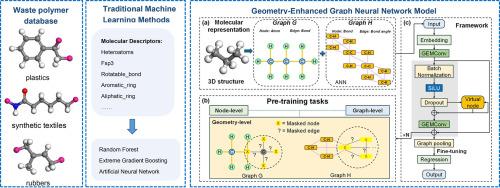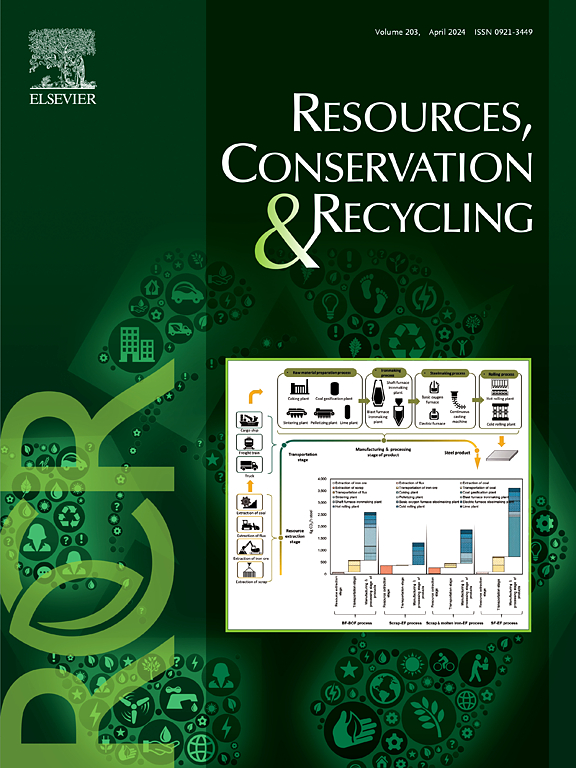Compatibility analysis of waste polymer recycling in asphalt binder using molecular descriptor and graph neural network
IF 11.2
1区 环境科学与生态学
Q1 ENGINEERING, ENVIRONMENTAL
引用次数: 0
Abstract
Recycling of waste polymers for valuable use is important for circular economy and environmental sustainability. This study introduces a novel approach to evaluating the compatibility between waste polymers and asphalt binders using advanced molecular representation models. The solubility parameters of waste polymers were predicted using traditional machine learning (ML) models and geometry-enhanced graph neural network (GeoGNN), respectively. The compatibility index was then calculated based on the absolute difference between the solubility parameters of polymers and asphalt. Results indicate that GeoGNN outperforms traditional ML and other GNN models due to its superior ability to capture complex spatial structures. The study also identifies key molecular descriptors that significantly influence solubility parameters of waste polymers. Given the variability in asphalt binder composition, the most compatible waste polymers differ across binders, making the data-driven approach especially valuable. The GeoGNN model greatly enhances the ability to assess compatibility in the polymer-asphalt system. This complements experimental techniques by integrating geometric information to analyze molecular features uncovering the structure-property relationship of material.

利用分子描述符和图神经网络分析沥青胶结料中废聚合物回收的相容性
回收利用废聚合物以实现有价值的利用对于循环经济和环境可持续性非常重要。本研究采用先进的分子表征模型,介绍了一种评估废弃聚合物与沥青粘结剂兼容性的新方法。分别使用传统的机器学习(ML)模型和几何增强图神经网络(GeoGNN)预测废聚合物的溶解度参数。然后根据聚合物和沥青溶解度参数之间的绝对差值计算出相容性指数。结果表明,GeoGNN 在捕捉复杂空间结构方面的能力优于传统的 ML 和其他 GNN 模型。研究还确定了对废聚合物溶解度参数有重大影响的关键分子描述符。鉴于沥青粘结剂成分的多变性,不同粘结剂中最相容的废弃聚合物也不尽相同,因此数据驱动方法尤为重要。GeoGNN 模型大大提高了评估聚合物-沥青系统兼容性的能力。它通过整合几何信息来分析分子特征,揭示材料的结构-性能关系,从而补充了实验技术。
本文章由计算机程序翻译,如有差异,请以英文原文为准。
求助全文
约1分钟内获得全文
求助全文
来源期刊

Resources Conservation and Recycling
环境科学-工程:环境
CiteScore
22.90
自引率
6.10%
发文量
625
审稿时长
23 days
期刊介绍:
The journal Resources, Conservation & Recycling welcomes contributions from research, which consider sustainable management and conservation of resources. The journal prioritizes understanding the transformation processes crucial for transitioning toward more sustainable production and consumption systems. It highlights technological, economic, institutional, and policy aspects related to specific resource management practices such as conservation, recycling, and resource substitution, as well as broader strategies like improving resource productivity and restructuring production and consumption patterns.
Contributions may address regional, national, or international scales and can range from individual resources or technologies to entire sectors or systems. Authors are encouraged to explore scientific and methodological issues alongside practical, environmental, and economic implications. However, manuscripts focusing solely on laboratory experiments without discussing their broader implications will not be considered for publication in the journal.
 求助内容:
求助内容: 应助结果提醒方式:
应助结果提醒方式:


